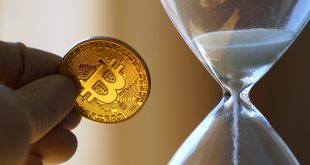On Friday, Dow Jones rallied as it gets closer to record its best month since January. Blue-chip index prices rose by 187 points, or 0.6%. S&P 500 gains were similarly 0.6%. The latest round of technology earnings weighed on investors’ mood, resulting in somewhat moderate gains for the Nasdaq Composite, which advanced by 0.4%.
Dow is expected to end April 2.4% higher with just Friday’s session remaining in the trading month. Its best monthly performance since January, when the average increased by 2.8%, would be that. The S&P 500 is expected to increase by 1.3% on a monthly basis, while the Nasdaq is expected to decline by 0.2%.
In what has historically been seen as Big Tech’s most important earnings week, the Nasdaq is expected to see the biggest weekly rise, at 1.1%. The Dow and S&P 500 are anticipated to end the week with approximately 0.8% of each rising.
Only slightly more than half of the S&P 500 companies have so far reported earnings. 80% of those companies have outperformed forecasts, according to FactSet data. Data from The Earnings Scout show that the beat rate is basically in line with a three-year average.
The market should follow earnings. Over 3% of Amazon’s shares were down. Although the online retailer beat Wall Street’s revenue projections for the first quarter, it reported that its cloud business had slowed down.
Following a revenue shortfall, Snap fell more than 18%. Following the release of disappointing second-quarter revenue growth expectations, Pinterest shares increased by more than 16%. After missing Wall Street forecasts for the first quarter, First Solar’s stock fell more than 11%, setting the firm up for its worst day since 2020.
Not all tech stocks decreased after their corresponding releases. After the semiconductor company exceeded expectations on both the top and bottom lines, Intel shares increased by more than 4%.
The personal consumption expenditures price index increased 0.3% in March, which was in line with analyst estimates, according to data released Friday morning. For the Federal Reserve, which has a policy meeting set for next week, the index is a crucial indicator of inflation.
After CNBC’s David Faber reported that the Federal Deposit Insurance Corporation taking receivership of the regional bank was the most likely outcome for the troubled First Republic Bank, shares of the bank fell more than 40%. Since the beginning of the year, the stock’s value has decreased by nearly 97%.
On Friday, the CBOE Volatility Index, also known as the VIX, hit a new multi-year low. The market’s “fear-gauge” decreased by another 5.5% on Friday, reaching its lowest point since November 2021 and signalling a low degree of market volatility. Low volatility, according to Goldman Sachs, won’t persist the remainder of the year.
One key factor is that an economy that is doing well typically coincides with a prolonged time of decreased volatility. In contrast, Goldman Sachs Research anticipates that the US GDP will increase 1.6% in 2023, which is less than its historical tendency, and that growth would probably slow down from this point on.

 Noor Trends News, Technical Analysis, Educational Tools and Recommendations
Noor Trends News, Technical Analysis, Educational Tools and Recommendations



